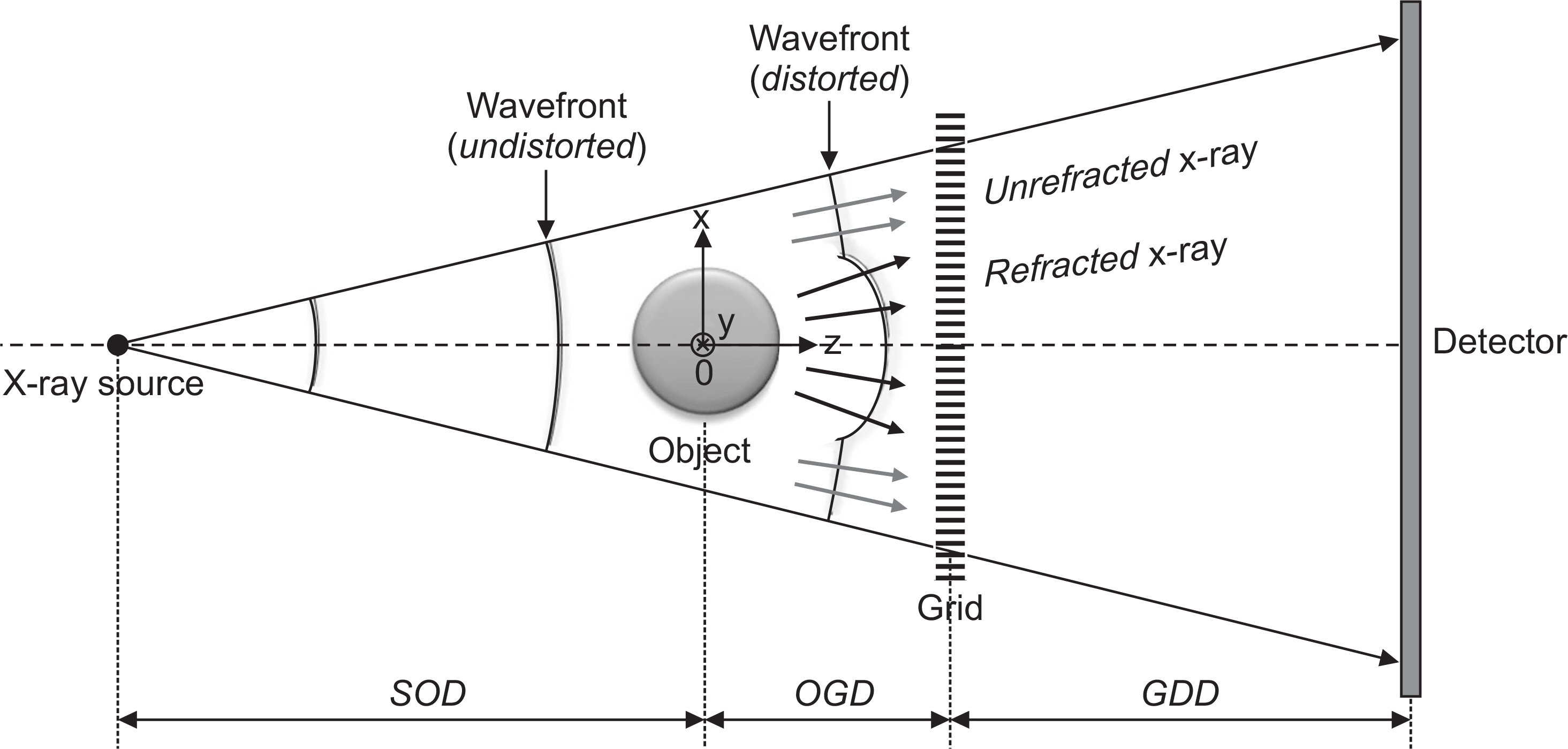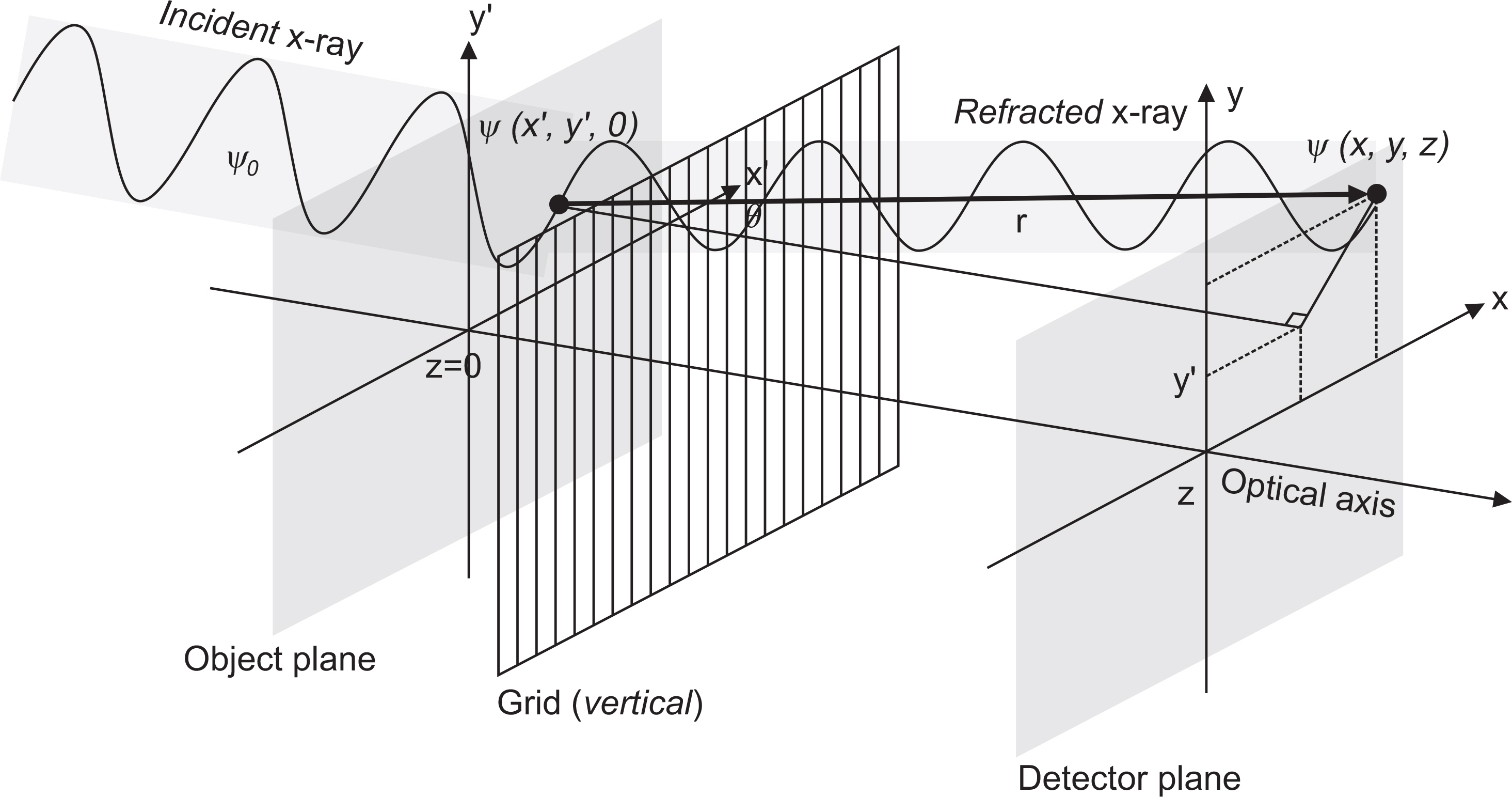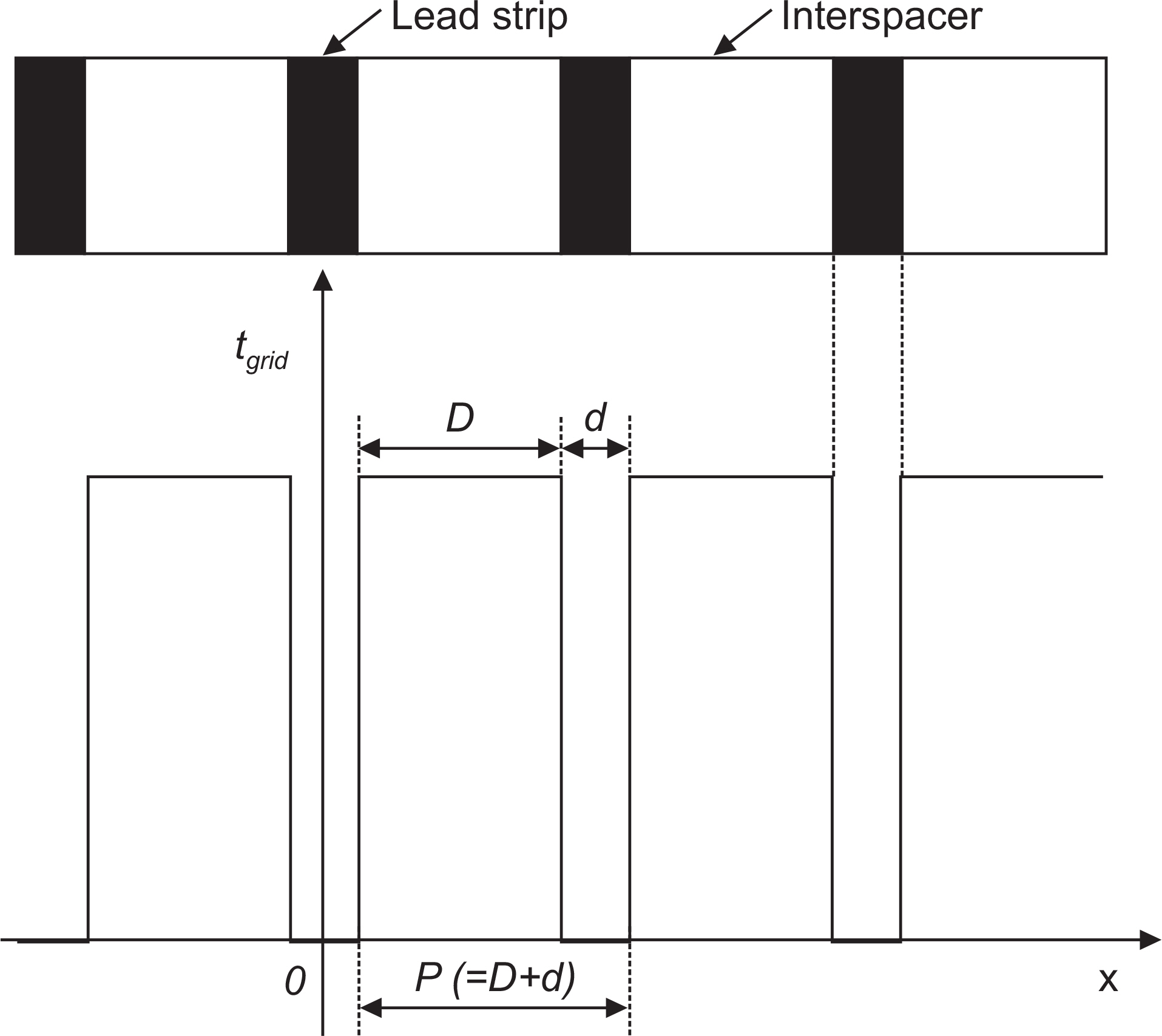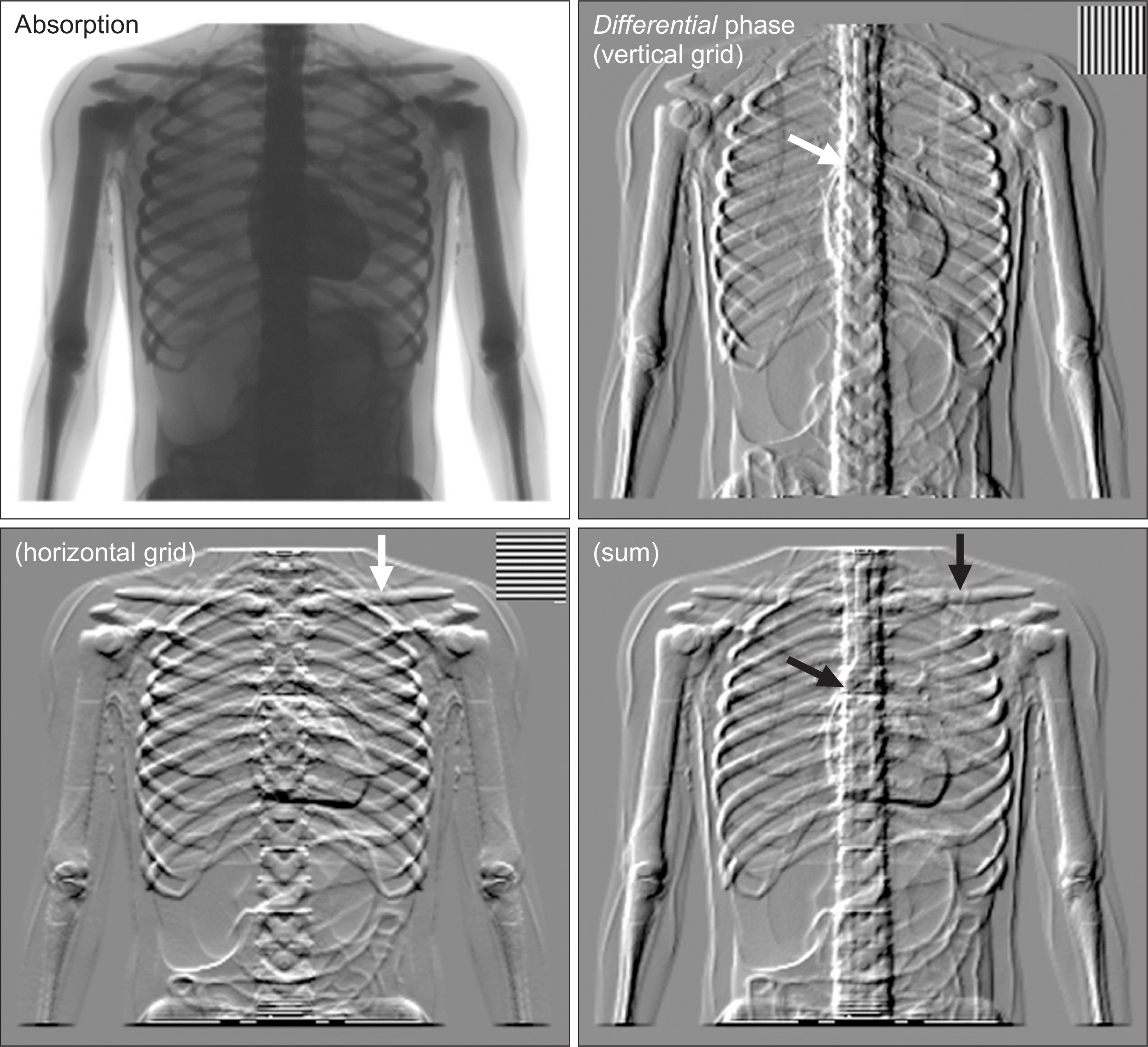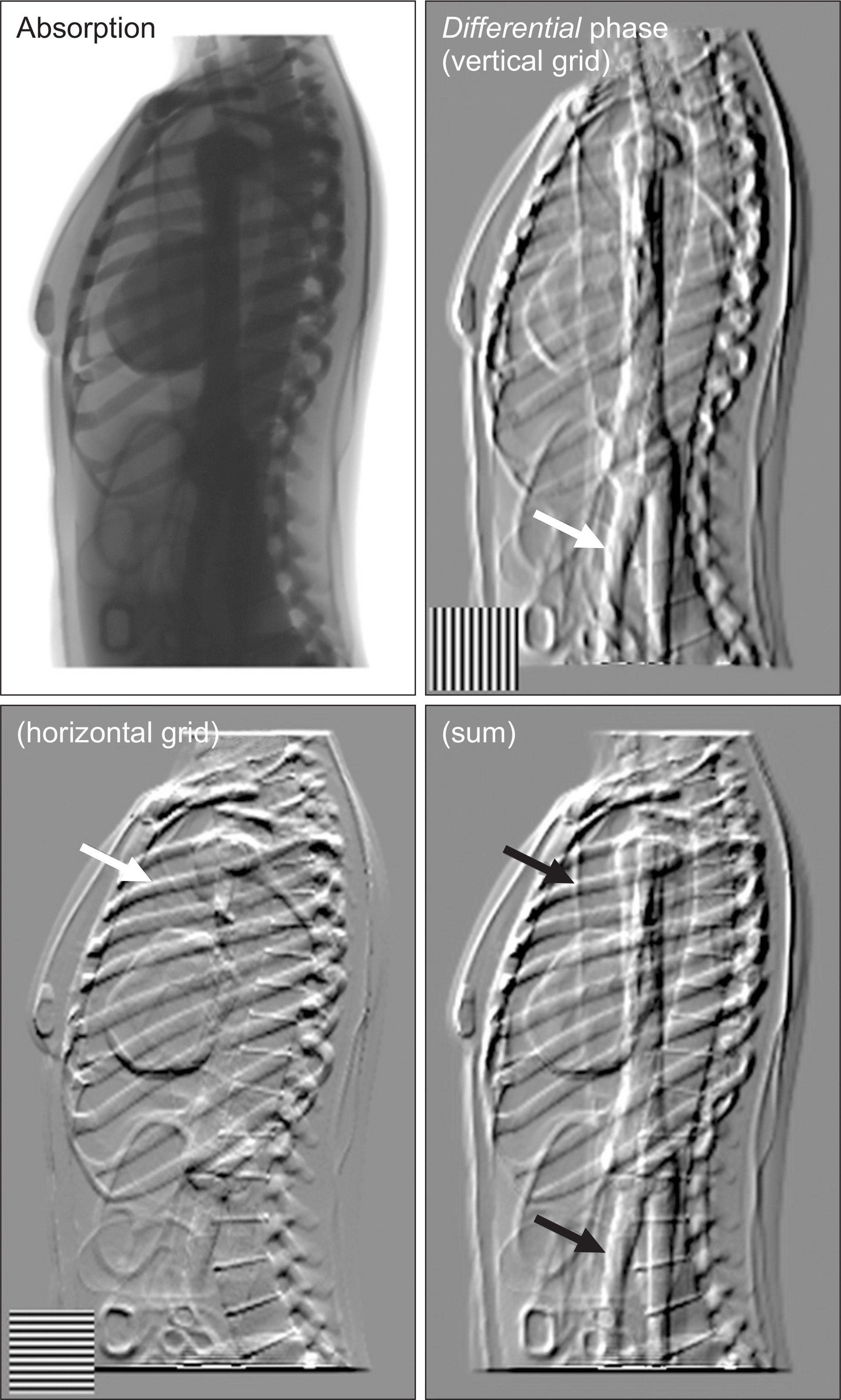Prog Med Phys.
2017 Sep;28(3):83-91. 10.14316/pmp.2017.28.3.83.
Numerical Modeling and Experiment for Single Grid-Based Phase-Contrast X-Ray Imaging
- Affiliations
-
- 1Department of Radiation Convergence Engineering, Yonsei University, Wonju, Korea. hscho1@yonsei.ac.kr
- 2Bio-Medical IT Convergence Research Division, ETRI, Daejeon, Korea.
- KMID: 2393368
- DOI: http://doi.org/10.14316/pmp.2017.28.3.83
Abstract
- In this work, we investigated the recently proposed phase-contrast x-ray imaging (PCXI) technique, the so-called single grid-based PCXI, which has great simplicity and minimal requirements on the setup alignment. It allows for imaging of smaller features and variations in the examined sample than conventional attenuation-based x-ray imaging with lower x-ray dose. We performed a systematic simulation using a simulation platform developed by us to investigate the image characteristics. We also performed a preliminary PCXI experiment using an established a table-top setup to demonstrate the performance of the simulation platform. The system consists of an x-ray tube (50 kV(p), 5 mAs), a focused-linear grid (200-lines/inch), and a flat-panel detector (48-µm pixel size). According to our results, the simulated contrast of phase images was much enhanced, compared to that of the absorption images. The scattering length scale estimated for a given simulation condition was about 117 nm. It was very similar, at least qualitatively, to the experimental contrast, which demonstrates the performance of the simulation platform. We also found that the level of the phase gradient of oriented structures strongly depended on the orientation of the structure relative to that of linear grids.
MeSH Terms
Figure
Reference
-
1. Lewis R. Medical phase contrast x-ray imaging: current status and future prospects. Phys. Med. Biol. 2004; 49:3573–3583.
Article2. Parham C, Zhong Z, Connor D, Chapman L, Pisano E. Design and implementation of a compact low-dose diffraction enhanced medical imaging system. Acad. Radiol. 2009; 16:911–917.
Article3. Burvall A, Lundström U, Takman P, Larsson D, Hertz H. Phase retrieval in X-ray phase-contrast imaging suitable for tomography. Opt. Express. 2011; 19:10359–10376.
Article4. Pfeiffer F, Bech M, Bunk O, Kraft P, Eikenberry E, Brön-nimann C, et al. Hard-X-ray dark-field imaging using a grating interferometer. Nat. Mater. 2008; 7:134–137.
Article5. Pfeiffer F, Herzen J, Willner M, Chabior M, Auweter S, Reiser M, et al. Grating-based x-ray phase contrast for biomedical imaging applications. Z. Med. Phys. 2013; 23:176–185.
Article6. Wen H, Bennett E, Kopace R, Stein A, Pai V. Single-shot x-ray differential phase-contrast and diffraction imaging using two-dimensional transmission gratings. Opt. Lett. 2010; 35:1932–1934.
Article7. Wen H, Bennett E, Hegedus M, Carroll S. Spatial harmonic imaging of x-ray Scattering-Initial results. IEEE Trans. on Med. Imaging. 2008; 27:997–1002.8. Goodman J. Introduction to Fourier optics. 3rd ed.Englewood: Roberts and Company Publishers;2005.9. Gauntt D, Barnes G. Grid line artifact formation: A comprehensive theory. Med. Phys. 2006; 33:1668–1677.
Article10. Wen H, Bennett E, Hegedus M, Rapacchi S. Fourier x-ray Scattering radiography yields bone structural information. Radiology. 2009; 251:910–918.
Article11. Pfeiffer F, Bunk O, David C, Bech M, Duc G, Bravin A, et al. High-resolution brain tumor visualization using three-dimensional x-ray phase contrast tomography. Phys. Med. Biol. 2007; 52:6923–6930.
Article12. Shepp L, Logan B. The Fourier reconstruction of a head section. IEEE Trans. on Nucl. Sci. 1974; 21:21–43.13. Kramer R, Cassola V, Khoury H, Vieira J, Lima V, Brown K. FASH and MASH: female and male adult human phantoms based on polygon mesh surfaces: II. Dosimetric calculations. Phys. Med. Biol. 2010; 55:163–189.
Article14. http://www.ts-imaging.net/Services/Simple/ICUtilXdata.aspx15. Park Y, Cho H, Lim H, Je U, Park C, Cho H, et al. Experimental Study for Phase-contrast X-ray Imaging Based on a Single Antiscatter Grid and a Polychromatic X-ray Source. Prog. in Med. Phys. 2015; 26:1–8.16. Kottler C, David C, Pfeiffer F, Bunk O. A two-directional approach for grating based differential phase contrast imaging using hard x-rays. Opt. Express. 2007; 15:1175–1181.
Article17. Wen H, Bennett E, Kopace R, Stein A, Pai V. Single-shot x-ray differential phase contrast and diffraction imaging using two-dimensional transmission gratings. Opt. Lett. 2010; 35:1932–1934.18. Tahir S. Grid-Based Fourier Transform Phase Contrast Imaging. Ph.D. thesis. State University of New York. 2015.
- Full Text Links
- Actions
-
Cited
- CITED
-
- Close
- Share
- Similar articles
-
- Experimental Study for Phase-contrast X-ray Imaging Based on a Single Antiscatter Grid and a Polychromatic X-ray Source
- Effect of a prototype 2-dimensional antiscatter grid on image quality obtained with a dental cone-beam computed tomography scanner
- Synchrotron Radiation Imaging of Breast Tissue Using a Phase-contrast Hard X-ray Microscope
- Phase Contrast Microradiography of Mouse Lung Using Synchrotron X-ray: Correlation with Optical Microscopy
- Optimal scan delay depending on contrast material injection duration in abdominal multi-phase computed tomography of pancreas and liver in normal Beagle dogs

